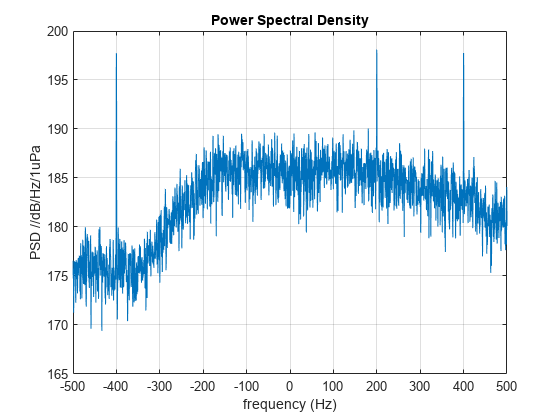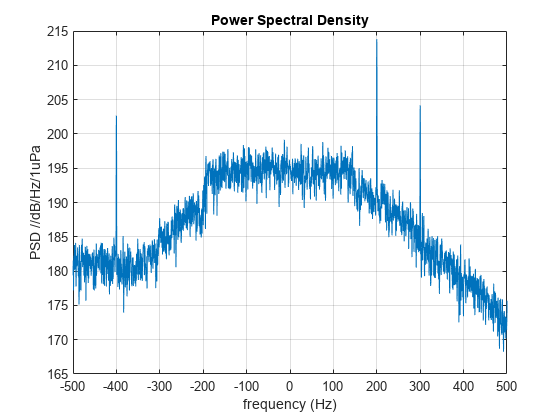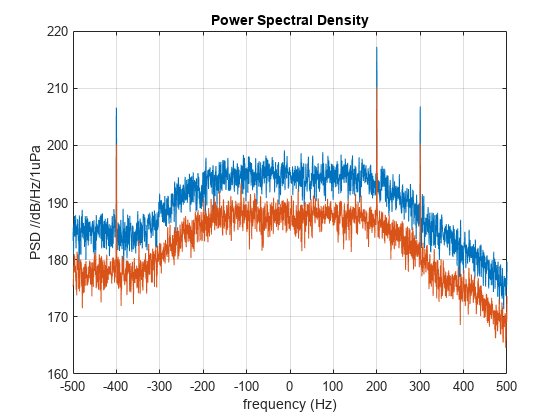phased.UnderwaterRadiatedNoise
Radiate acoustic noise from underwater or surface sound source
Description
The phased.UnderwaterRadiatedNoise System object™ creates a source of underwater radiated acoustic noise. The noise source can either be on the sea surface or underwater. The radiated noise consists of two components: broadband noise and tonal noise. Broadband noise fills the entire operating system bandwidth while tonal noise occurs at discrete frequencies within the bandwidth. In general, the intensity of the radiated noise depends on the noise spectrum and the source radiation pattern. The object lets you specify
The spectral shape and levels of the broadband noise.
The frequencies and levels of the tones.
The noise source radiation pattern.
To propagate noise from a source to a receiver, use this object with the
phased.IsoSpeedUnderwaterPaths and the phased.MultipathChannel objects.
To generate radiated underwater noise:
Create the
phased.UnderwaterRadiatedNoiseobject and set its properties.Call the object with arguments, as if it were a function.
To learn more about how System objects work, see What Are System Objects?
Creation
Syntax
Description
noiseradiator = phased.UnderwaterRadiatedNoise
noiseradiator = phased.UnderwaterRadiatedNoise(Name,Value)Name
set to a specified Value. You can specify additional name-value pair
arguments in any order as
(Name1,Value1,...,NameN,ValueN).
Enclose each property name in single quotes.
Example: noiseradiator = phased.UnderwaterRadiatedNoise('TonalLevels',[4700
4900 5150],'SampleRate',500,'OperatingFrequency',5000) creates a noise source
with tones at 4.7, 4.9, and 5.15 kHz. The sample rate is set to 0.5 kHz and the operating
frequency is 5 kHz. The broadband noise levels are set to default values.
Properties
Usage
Syntax
Input Arguments
Output Arguments
Object Functions
To use an object function, specify the
System object as the first input argument. For
example, to release system resources of a System object named obj, use
this syntax:
release(obj)
The reset object function resets the random number generator state
when the SeedSource
property is set to 'Property'.
Examples
More About
References
[1] Urick, R.J. Principles of Underwater Sound, 3rd Edition. New York: Peninsula Publishing, 1996.
Extended Capabilities
Version History
Introduced in R2017b
See Also
Objects
phased.BackscatterSonarTarget|phased.IsoSpeedUnderwaterPaths|phased.IsotropicHydrophone|phased.IsotropicProjector|phased.MultipathChannel
Functions
range2tl|sonareqsl|sonareqsnr|sonareqtl|tl2range


